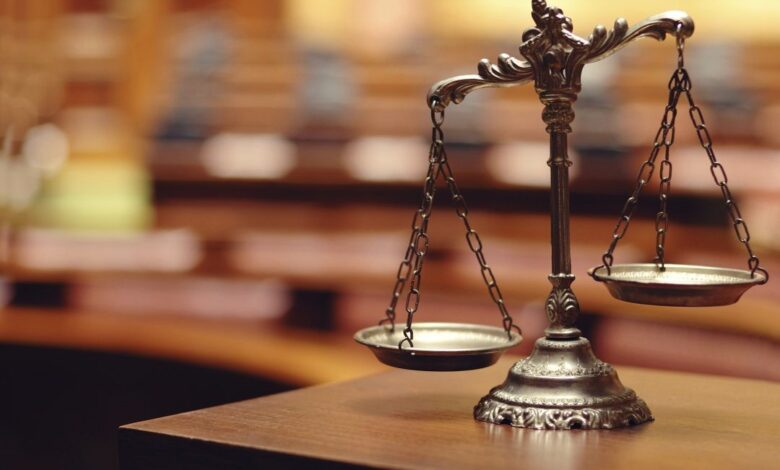The Timeframe of Personal Injury Mediation

Personal injury mediation is a process that aims to resolve legal disputes stemming from personal injuries, such as accidents, negligence, or medical malpractice. Its fundamental purpose is to foster open communication and negotiation between the involved parties, facilitating an efficient and mutually acceptable settlement. Instead of battling it out in court, personal injury mediation focuses on compromise, collaboration, and amicable resolutions. This approach allows the parties involved to have a say in the outcome and often results in quicker, less adversarial, and more cost-effective solutions than traditional litigation.
Preparation Phase in Personal Injury Mediation
Gathering Evidence and Documentation
In the initial stages of personal injury mediation, the process begins with a meticulous collection of evidence and essential documentation. This critical step involves gathering medical records, police reports, witness statements, and any other pertinent evidence related to the incident. Ensuring that all documents are organized and readily accessible is vital. The goal is to present a clear and compelling case that substantiates your claim, enabling a smoother negotiation process during mediation.
Initial Consultation with Mediation Professionals
Before diving into the mediation process, a crucial preliminary step is to consult with mediation professionals. These experts possess the expertise and experience to guide you through the intricacies of personal injury mediation. They will offer insights into the process, helping you understand your rights and options. During this consultation, you can address any questions or concerns, setting the stage for a more informed and confident mediation experience.
Exploring Settlement Options and Setting Goals
One of the core elements in personal injury mediation is the exploration of settlement options and the establishment of clear objectives. Mediation provides a unique platform to discuss various resolutions rather than pursuing a protracted legal battle. During this phase, you’ll work with your legal team and mediator to set realistic goals and expectations. It’s essential to have a clear understanding of what you hope to achieve through mediation, be it financial compensation or other remedies. This process helps streamline the mediation proceedings and keeps the focus on reaching a fair and equitable settlement.
The Mediation Process: Timeline and Procedures
Scheduling and Logistics of Mediation Sessions
Scheduling and logistics play a vital role in personal injury mediation. The process typically begins with selecting a mutually agreeable date and location for the mediation sessions. Parties involved, including their legal representatives, must coordinate their availability. This phase sets the tone for the entire mediation process and fosters an environment conducive to productive discussions. It’s essential that all logistical aspects are meticulously planned, ensuring minimal disruptions during the mediation sessions.
Opening Statements and Presentation of Evidence
The mediation process commences with each party making an opening statement. During this phase, they outline their perspectives and objectives. Subsequently, evidence is presented to support their claims. This could include medical records, accident reports, or witness statements. The aim here is to provide a comprehensive picture of the case. The clarity and strength of the evidence presented often influence the direction of the mediation, making this a pivotal step in the process.
Negotiation and Mediation Techniques Employed
Negotiation and mediation techniques are the heart of the process. Skilled mediators guide the parties through discussions, employing various strategies such as interest-based negotiation, reality testing, and joint problem-solving. These techniques help in identifying common ground and bridging gaps. The mediator’s role is to facilitate constructive communication, making it possible for parties to explore options and reach mutually acceptable agreements.
Reaching an Agreement: Mediation Closure and Terms
Reaching a consensus marks the closure of the mediation process. The terms of the agreement are carefully drafted and reviewed by all parties involved. This legally binding document outlines the agreed-upon resolution, including compensation and any other pertinent details. Once signed, it concludes the mediation process, and parties can move forward with the terms they have collectively decided upon, providing closure to the personal injury case.
Factors Influencing the Duration of Personal Injury Mediation
Complexity of the Case and Legal Issues
The complexity of a personal injury case significantly influences the mediation timeline. Cases with intricate legal issues or multiple parties involved may require more extended deliberations. In contrast, simpler cases tend to reach resolution more swiftly. The nature of the injuries, extent of liability, and the number of involved insurance companies all contribute to the case’s complexity.
Willingness of Parties to Cooperate and Compromise
Willingness to cooperate and compromise is a key determinant of the mediation’s duration. Parties who are open to finding common ground and making concessions often lead to shorter mediation periods. Conversely, stubbornness or an unwillingness to work together can extend the process. The mediator’s skill in encouraging cooperation plays a critical role here.
Role of Mediator and Their Mediation Style
The mediator’s expertise and chosen mediation style impact the proceedings. Experienced mediators with a firm grasp of personal injury law can streamline the process. Mediators who adopt a facilitative, evaluative, or transformative style will guide discussions differently, potentially expediting or prolonging the mediation.
Emotional and Psychological Factors in the Mediation Process
The emotional and psychological state of the parties involved can also affect the mediation timeline. Emotions, such as anger, grief, or frustration, can hinder productive discussions. Skilled mediators employ techniques to manage these emotions and refocus the parties on finding common ground. The ability to navigate the emotional aspects of a personal injury case can significantly influence the mediation’s duration.
Benefits of Timely Resolution in Personal Injury Mediation
Reducing Legal Costs and Time Burden
Efficiently resolving personal injury disputes through mediation offers substantial advantages. Notably, it cuts down on legal expenses and the time-consuming nature of court proceedings. Unlike protracted litigation, mediation is a cost-effective, swift avenue to reach a settlement. By circumventing lengthy court battles, individuals can promptly address their grievances and move forward.
Minimizing Emotional Stress for the Parties Involved
Personal injury cases often come with a heavy emotional toll on the parties involved. Timely mediation eases this emotional burden. Instead of enduring the emotional strain of prolonged litigation, mediation promotes a quicker resolution that allows the injured party to find closure and healing sooner. This streamlined process is empathetic to the emotional well-being of those affected.
Preserving Relationships and Enhancing Communication
One often overlooked advantage of timely personal injury mediation is its capacity to preserve relationships. Injuries can strain interpersonal connections, but mediation, through its cooperative approach, promotes communication and understanding. Parties can discuss their concerns openly and work together to find a solution, fostering improved relationships, especially when parties are family members, friends, or coworkers.
Ensuring Fair and Just Compensation for the Injured Party
Fair compensation is a central tenet of personal injury mediation. It ensures that injured parties receive equitable restitution promptly. Mediation allows for a more tailored approach to determining compensation, considering the unique circumstances of each case. By resolving the matter expeditiously, it guarantees a fair and just outcome for those who have suffered harm.
In conclusion, personal injury mediation, with its emphasis on efficiency and cooperation, provides a faster, more empathetic, and cost-effective way to resolve disputes. By embracing this approach, individuals can find closure, preserve relationships, and ensure equitable compensation promptly.
Publisher’s Details:
Cohen & Marzban Personal Injury Attorneys
225 S Lake Ave STE 300, Pasadena, CA 91101
(866) 518-1137
losangelespersonalinjury.attorney
[email protected]
While navigating personal injury mediation, it’s essential to consider the timeframe and steps involved. In some cases, like car accidents, you may need legal support to maximize your compensation. Cohen & Marzban Personal Injury Attorneys offer the best services for Los Angeles car accident claims. They can help you navigate the complexities of your case effectively. For reputable car accident attorneys in Pasadena, CA, Cohen & Marzban is your best choice.
Read: Maximize Compensation for Your Los Angeles Car Accident Claim




